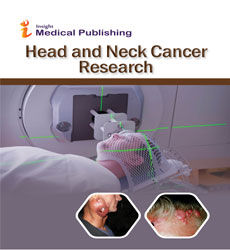Oral Carcinogens and Oral Cancer: A Short Notes
Christina Paul*
Department of Cancer Research, University of Texas MD Anderson Cancer Centre, Houston, USA
- *Corresponding Author:
- Christina Paul
Department of Cancer Research, University of Texas MD Anderson Cancer Centre, Houston, USA, Email: paul_c@ut.edu
Received Date: October 04, 2021; Accepted Date: October 08, 2021; Published Date: November 04,
2021
Citation: C Paul (2021) Oral Carcinogens and Oral Cancer: A Short Notes. Head Neck Cancer Res. Vol.6 No.5.41
Abstract
Abstract
The oral carcinogenesis is a process that occurs at the squamous epithelium in the multifocal site. By the application of the certain biological techniques for treating or diagnosing the oral lesion of the pancreas are been improved with the early detection with the advancement of the technologies. The certain infections, in humans particularly human papillomavirus has a factor of causing cancer are discussed in this article.
Introduction
In overall survey round the globe, the head and neck cancer rank the sixth place. They are generally located in the oral cavity of almost 50% of cases and over 92% of the cases with the oral squamous cell carcinoma. Also, there are few preceded lesions in the pancreas. Annually, the oral squamous cell carcinomas that are treated are of 200,000 to 400,000. The most common area which causes carcinoma is tongue, almost 35% to 45% cases are observed. The second most common intra-oral location is floor of the mouth. Oral and pharyngeal carcinomas account for the up to other half of the malignancies in India as well as the other counties. There is a drastic increase in the prevalence of oral cancer among the younger adults. Almost 60% to 75% of the increase in adults above 40 years old are seen with the tongue cancer and even there are several long-term survival cases are been notices with the application of the advanced treatments.
The oral carcinogenesis is a process that occurs at the squamous epithelium in the multifocal site. By the application of the certain biological techniques for treating or diagnosing the oral lesion of the pancreas are been improved with the early detection with the advancement of the technologies. The natural history of the oral cancer and sequence of the genetic alterations play a major role. There are several parameters or the certain approaches for the molecular basis of the oral cancer such as micro-array technology, gene expression, genomic hybridization, mitochondrial arrays etc. In the present generation, the high-throughput approaches are being applied to diagnose the oral cancer biomarkers in the biofluids (saliva, serum etc).
There are several risk factors that are been associated with the oral cancer and the most importantly it is seen in the cases where the population smoke the tobacco. Though the habit of drinking and smoking are having their own independent risk factors, these do become the greater risk on addition to the cancer. Genetically, there are many cases that are been noticed that cancer comes through the familial component. The familial aggregation of the oral cancer with some autosomal dominant is less. The individuals with both familial component as well as the habit of tobacco and alcohol consumption are at higher risk of developing the oral cancer. Inflammation is one the factor that regulates the body’s functioning. The inflammation of the interlukins and the few growth factors implies the tumour growth. The certain infections, in humans particularly human papillomavirus has a factor of causing cancer i.e., oral cancer mostly in the people those who are having the habit of drinking and smoking.
The tobacco related oral mucosa is alternated through the smokeless tobacco such as by the snuff or chewing tobacco. Generally, lesions are noticed in the buccal area and buccal mucosa in the form of patches. The degree of the clinical alterations in the mucosa depends on the type and quality of tobacco that is being used. The detection of the oral cancers is a tough job for the clinical examiners. Because, in the early occurrence it is difficult to distinguish between the healthy cell and the cancerous cells or tissues.
Acknowledgments
None
Conflicts of Interest
The authors declare that there are no conflicts of interest.
Open Access Journals
- Aquaculture & Veterinary Science
- Chemistry & Chemical Sciences
- Clinical Sciences
- Engineering
- General Science
- Genetics & Molecular Biology
- Health Care & Nursing
- Immunology & Microbiology
- Materials Science
- Mathematics & Physics
- Medical Sciences
- Neurology & Psychiatry
- Oncology & Cancer Science
- Pharmaceutical Sciences
